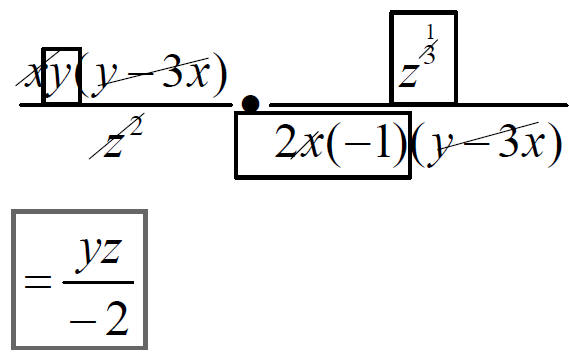- Home
- INTERMEDIATE ALGEBRA
- Course Syllabus for Algebra I
- Mid-Plains Community College
- FRACTION OF A WHOLE NUMBER
- Systems of Linear Equations
- MATH FIELD DAY
- Course Outline for Finite Mathematics
- Calculus
- Algebra Final Examination
- Math 310 Exam #2
- Review of Trigonometric Functions
- Math 118 Practice test
- Precalculus Review
- Section 12
- Literal Equations
- Calculus Term Definitions
- Math 327A Exercise 2
- Public Key Algorithms II
- Maximizing Triangle Area
- Precalculus I Review for Midterm
- REVIEW OF A FIRST COURSE IN LINEAR ALGEBRA
- Math 6310 Homework 5
- Some Proofs of the Existence of Irrational Numbers
- ALGEBRAIC PROPERTIES OF MATRIX OPERATIONS
- Math 142 - Chapter 2 Lecture Notes
- Math 112 syllabus
- Math 371 Problem Set
- Complex Numbers,Complex Functions and Contour Integrals
- APPLICATIONS OF LINEAR EQUATIONS
- Week 4 Math
- Fractions
- Investigating Liner Equations Using Graphing Calculator
- MATH 23 FINAL EXAM REVIEW
- Algebra 1
- PYTHAGOREAN THEOREM AND DISTANCE FORMULA
- Georgia Performance Standards Framework for Mathematics - Grade 6
- Intermediate Algebra
- Introduction to Fractions
- FACTORINGS OF QUADRATIC FUNCTIONS
- Elementary Algebra Syllabus
- Description of Mathematics
- Integration Review Solutions
- College Algebra - Applications
- A Tip Sheet on GREATEST COMMON FACTOR
- Syllabus for Elementary Algebra
- College Algebra II and Analytic Geometry
- Functions
- BASIC MATHEMATICS
- Quadratic Equations
- Language Arts, Math, Science, Social Studies, Char
- Fractions and Decimals
- ON SOLUTIONS OF LINEAR EQUATIONS
- Math 35 Practice Final
- Solving Equations
- Introduction to Symbolic Computation
- Course Syllabus for Math 935
- Fractions
- Fabulous Fractions
- Archimedean Property and Distribution of Q in R
- Algebra for Calculus
- Math112 Practice Test #2
- College Algebra and Trigonometry
- ALGEBRA 1A TASKS
- Description of Mathematics
- Simplifying Expressions
- Imaginary and Complex Numbers
- Building and Teaching a Math Enhancement
- Math Problems
- Algebra of Matrices Systems of Linear Equations
- Survey of Algebra
- Approximation of irrational numbers
- More about Quadratic Functions
- Long Division
- Algebraic Properties of Matrix Operation
- MATH 101 Intermediate Algebra
- Rational Number Project
- Departmental Syllabus for Finite Mathematics
- WRITTEN HOMEWORK ASSIGNMENT
- Description of Mathematics
- Rationalize Denominators
- Math Proficiency Placement Exam
- linear Equations
- Description of Mathematics & Statistics
- Systems of Linear Equations
- Algebraic Thinking
- Study Sheets - Decimals
- An Overview of Babylonian Mathematics
- Mathematics 115 - College Algebra
- Complex Numbers,Complex Functions and Contour Integrals
- Growing Circles
- Algebra II Course Curriculum
- The Natural Logarithmic Function: Integration
- Rational Expressions
- QUANTITATIVE METHODS
- Basic Facts about Rational Funct
- Statistics
- MAT 1033 FINAL WORKSHOP REVIEW
- Measurements Significant figures
- Pre-Calculus 1
- Compositions and Inverses of Functions
Rational Expressions
In Math, “Rational Numbers” are just numbers that can be
written as
fractions:

and so on…..
Rational Expression are just polynomials that are written
in the form
of a fraction.
Examples:

If a rational expression has ONLY multiplication and
division
involved, reducing it to simplest form is just a matter of cancelling
out common factors.
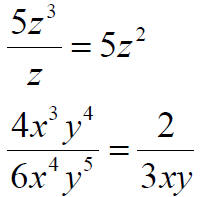
When a rational expression has addition or subtraction
involved,
it must be REWRITTEN into an expression with ONLY
MULTIPLICATION & DIVION in order to be reduced to
simplest form. You CANNOT CANCEL OUT common terms
if they are not FACTORS (something being multiplied).

If we factor the polynomials in the numerator &
denominator,
then we can cancel out COMMON FACTORS.

HERE!
After factoring the denominator, we should notice that this rational expression would be
UNDEFINED (have 0
denominator) if x = 4 or if x= -2.
So we must state the restrictions that x ? 4 and x? -2

together. You can now cancel the common factors.
Simplify:
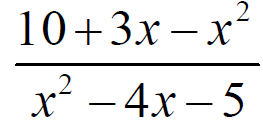
How do we factor an expression when the coefficient of x2
is negative?
It’s easier to do if you factor out a -1 from the expression.
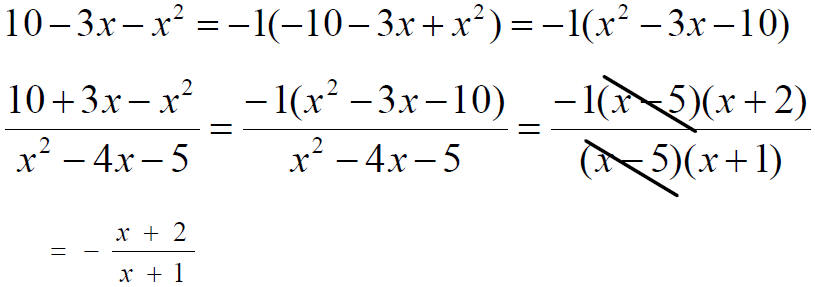
Example 1C
Simplify:

Multiplying Rational Expressions
This works the same as multiplying fractions, but make
sure
to only cancel out FACTORS from top to bottom, not side
to side. Of course each expression must be FACTORED
before you can cancel out FACTORS.
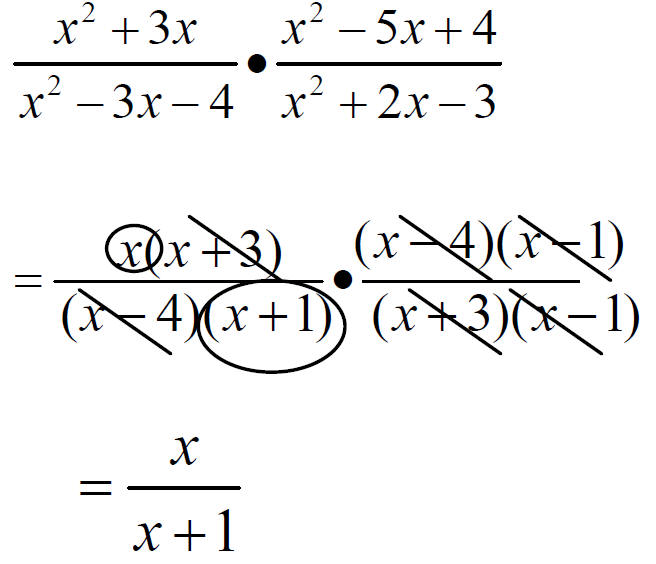
Dividing Rational Expressions
The way to divide rational expressions is the same method
as
dividing fractions. Just take the reciprocal of the divisor (the
rational expression after the division sign, ÷ ) and multiply.
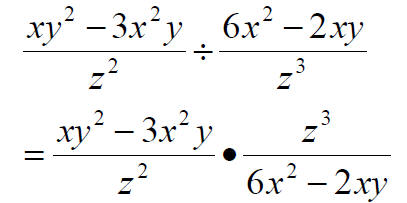
First, factor the polynomials wherever possible.

Notice the (y-3x) and the (3x - y). We’ve seen this
before.
Just change one expression to look like the other and multiply by -1.
(3x-y)=-1(y-3x)
